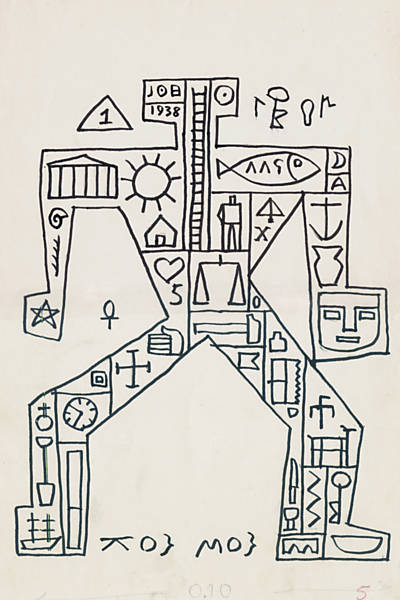Joaquin Torres-Garcia was born in Montevideo in 1874 and died there in 1949. He arrived in Barcelona aged 17 when his father, a Catalan who had immigrated to South America, decided to return. In fact, Torres- Garcia was an artist who emigrated and never really stopped travelling. He was always a nomad and that´s because he thought that it´s the travel that forms you mostly.

Torres - Garcia was in key places in modern art history. He was the central figure for the Catalan culture and the scene of Barcelona. Then he was a very important in New York and later became the most emblematic among artists from South America. During his life and after he was very much idolized by French and Americans, for example, Jean Micheal Basquiat admired him for his wild, primitive and dirty style. For Spain on the other hand it took some time as the country was not interested in Torres until the very late 90s. However, he did, of course, develop a personal relationship with the artistic circle of Spaniards like Picasso, Guillermo de Torre or Miro and was part of Quatre Gats.

He was an artist who had a clear idea that there is no opposition between figurative and abstract art. The artist who was always involved in playing with figures as elements of construction. For a century the art circles fought with each other, about the structure and the figurative concepts. He, on the other hand, did not see the need to make a difference between the two.

He elaborates it very clearly and practices his thoughts that between figuration and abstraction there is no real opposition and that in art everything is an adjunct to construction and that construction can be apparent with life and concrete or abstract reality. It was abstract and concrete but not abstract and figurative. On the other hand, it is true that Torres Garcia is a fairly unclassifiable character. Because it was never like in one category. A bit radical, a bit libertarian to go back and forth. Moreover, the modernity does not coexist, if it does not identify the present with the present manifestation of temporality. This obsession with the infuse of the world, with the arcadian, for the rustic form, makes him a difficult character to assume and to classify in what he was in modern themes.
After studying and painting (for decades) in Europe, Torres-García returned in 1934 to his native home, Montevideo, with the dream of reawakening and revitalizing what he considered the true indigenous essence of Latin American art: "Abstract Spirit."
¨There should be no North for us, except in opposition to our South.
That is why we now turn the map upside down, and now we know what our true position is, and it is not the way the rest of the world would like to have it. [...] When ships sail from here travelling north, they will be travelling down, not up as before. Because the North is now below. And as we face our South, the East is to the left.
This is a necessary rectification; so that now we know where we are.¨

It took him 43 years to return back home and now his aim was to create a universal art that is understandable for everyone. To portray his development of Constructive Universalism, he began a project called the Asociacion de Arte Constructivo (Association of Constructive Art). Its goal was to spread knowledge about abstraction to the country of Uruguay.
So created the theory of image called "constructive universalism", meaning contemporary art that was influenced by the traditions of indigenous Americans.

That´s why he was using simple drawings so it´s possible for the whole world to understand what he meant. These are signs that are comune for many cultures. With the lines that are straight, vertical and horizontal with his paintings, he was showcasing the whole universal symbols that represent humanity, work, life, balance or family.
Also, he was using the mathematical linear equations and spatial relationships as he called this the Golden Section.He dyed whilst preparing a an exhibition For Sidney Janis Gallery in NYC. His wife, Manolita continued his legacy and opened a museum in Uruguay in his name at the age of 106.


